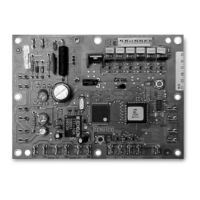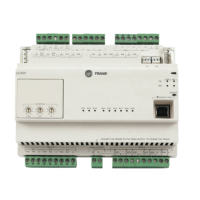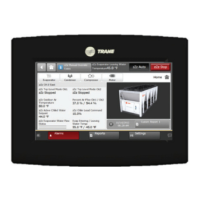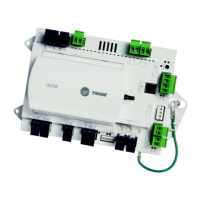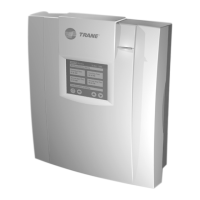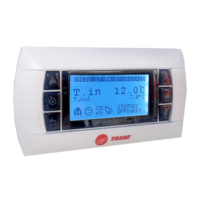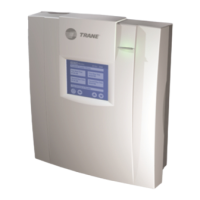Chapter 10 Status indicators for operation and communication
74 CNT-SVX12C-EN
Manual output test
The manual output test sequentially turns off and on all binary outputs
to verify their operation. The test overrides normal operation of the con-
troller, which is suspended while the test is being performed.
Use the manual output test to:
• Verify output wiring and operation.
• Force compressor operation so that a technician can use test equip-
ment to verify unit operation.
• Clear diagnostics and restore normal operation (although not a pri-
mary function of the manual output test).
Perform the manual output test either by repeatedly pressing the Test
button to proceed through the test sequence or by using the Rover service
tool. Table 22 on page 75, Table 23 on page 75, and Table 24 on page 76
list the outputs in the sequence in which they are verified for the 2-heat/
2-cool, 4-cool, and heat pump configurations, respectively.
To perform a manual output test:
1. Press and hold the Test button for 3 to 4 seconds, then release the
button to start the test mode. The green LED light goes off when the
Test button is pressed, and then it blinks (as described in Table 26 on
page 77) when the button is released to indicate the controller is in
manual test mode.
2. Press the Test button (no more than once per second) to advance
through the test sequence. Table 22 shows the resulting activities of
the binary outputs.
3. The controller exits the test mode after the final step or after 1 hour
passes, whichever comes first.
Service Pin button
Use the Service Pin button to verify that the controller is communicating
on the network communications link, and to add devices and identify
existing devices on the network communications link. See Figure 27 on
page 73 for the location of the Service Pin button.
For more information about the function of the Service Pin button, see the
Rover Operation and Programming guide (EMTX-SVX01B-EN) or the
Tracker Building Automation System Hardware Installation guide
(BMTK-SVN01A-EN).
Note:
The outputs are not subject to minimum on or off times during
the test sequence. However, the test sequence permits only one
step per second, which enforces a minimum output time.
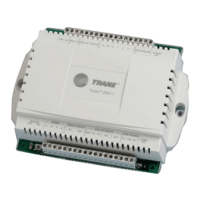
